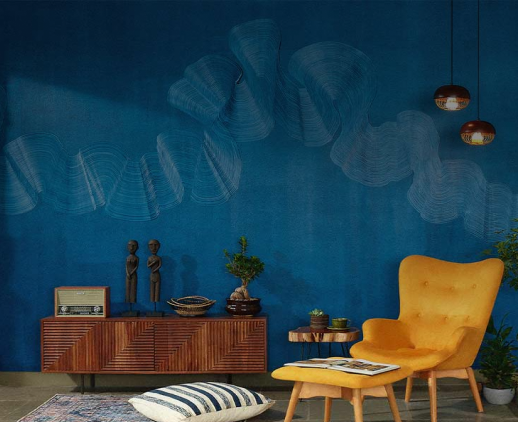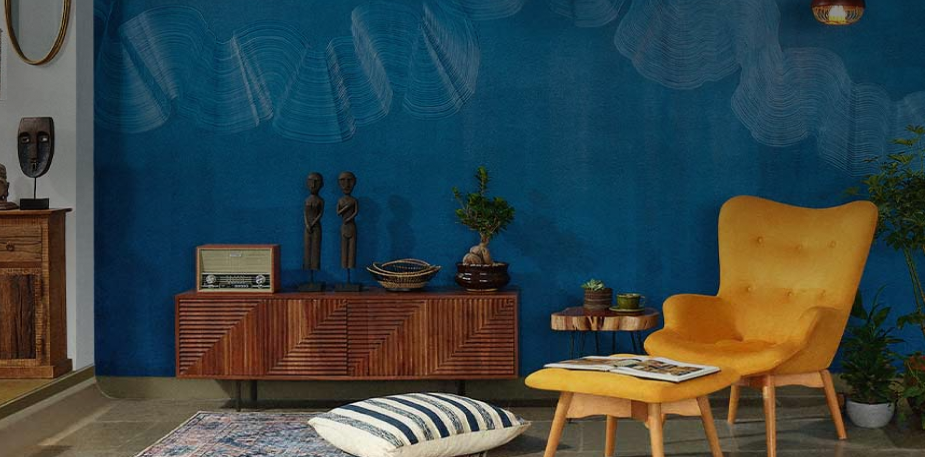Get your home interior design budget estimate
Our design history in 10 objects

These products represent the evolution of our tastes as a people and the function of our spaces
In December for the Architectural Digest Design Show in Mumbai art historian Deepthi Sasidharan of Eka Archive curated a family of 75 objects that represented the nation’s design trajectory in various fields. These are designs that are part of the modern history of this country, altering our collective perception of problem-solving objects. Deepthi edited that list down to ten particular products that have had the most impact on personal spaces in the country.
1. Godrej Tubular Armless Chair, reproduced 1960’s
Credit: Godrej Archives
Influenced by the global Bauhaus movement, the Godrej tubular chair exemplifies India at office. These instantly recognisable chairs were made with tubular steel and represented a new furniture idiom that were widely recognised in the 1960’s. The Godrej version used steel and hardwood and was associated with sound ergonomics, sturdiness and longevity of use.

Image courtesy, Team Architectural Digest

Image courtesy, Team Architectural Digest
2. Mira Chair by George Nakashima, 1961
Rosewood, made in NID c. 1965 - 1971
Credit: Archives, National Institute of Design, Ahmedabad
Named after his daughter, this is one of Nakashima's earliest designs made as a high chair for Mira to be able to sit at the table with the family. This version was produced in the NID workshops after Nakashima's visit in November 1964. The profiled seat embodies the wear of everyday interaction.
3. Wool and cotton tapestry by Nelly Sethna (1932 - 1992)
Untitled (c. 1980s)
Nelly Sethna wore many hats in her life. She was a pathbreaking textile designer and a creator of extraordinary fibre tapestries. As a teacher, she helped lay the foundations of teaching textile design at NID. And as a craft researcher, she pioneered the revival and contemporisation of the Srikalahasti and Masulipatnam kalamkari.

Image courtesy, Harshita Nayyar for Architectural Digest

Image courtesy, Harshita Nayyar for Architectural Digest
4. Lacquerware by Dashrath Patel (1927 - 2010)
Sewapuri, Gandhi Ashram (Late 1980's)
Credit: Dashrath Patel Museum
A ceramist, painter, photographer, sculptor, Dashrathbhai’s multidisciplinary oeuvre was inexhaustible and as the first Founder Secretary of the National Institute of Design, Ahmedabad, he was a visionary who led design education in India.
5. Godrej Prima Typewriter (1983)
Credit: Godrej Archives
The brainchild of Naval Godrej, and first introduced in 1955, the Godrej typewriter was once regarded as the most modern machine of its type. It was a symbol of an Indian made machine that would match international quality standards.

Image courtesy, Godrej

Image courtesy, Harshita Nayyar for Architectural Digest
6. Longpi Hampaí by Mathew Sasa (b. 1950)
Serpentinite stone and sala clay, 2022
Credit: Mathew Sasa
The traditional black stone pottery of Manipur uses a special clay from the Longpi area and hence its name—Longpi Hampai. Each piece is manually shaped, polished, sun dried and then fired.
7. Pierre Jeanneret Office Floating Back Chair (1896 - 1967)
Reclaimed teak and rattan, aged light with marks
Credit: Phillips Contemporary
This chair is reminiscent of Pierre Jeanneret’s designs for university housing and administrative buildings in Chandigarh, India. Modelled after the PJ-SI-28A style (c. 1955-56), this style also features classical braided caning, ‘V’ shaped legs and arm rests. However, the distinctive characteristic of this chair is its ‘floating back’ that lends it a very contemporary and sleek look making it an ideal addition with any style of interior décor.

Image courtesy, Team Architectural Digest

Image courtesy, Harshita Nayyar for Architectural Digest
8. Namdah Wool Rug by Riten Mozumdar (1927 - 2006)
Wool, tie and dye, acid discharge print and embroidery
Credit: Private Collection
In the mid 1950’s Riten Mozumdar, a Santiniketan artist, was discovered by Armi Ratia, the founder of Printex-Marimekko, thereby nudging his creative practice journey towards abstract art. Mozumdar was soon running a successful studio in Delhi a decade later experimenting with striking shapes and gaining a loyal customer following. His exceptional tie-dye felted rugs won acclaim in international museums and he is best remembered for his association with FabIndia, where his home linen defined a new aesthetic comprising of bold geometric shapes.
9. Saree by Martand Singh (1947 - 2017)
Cotton ivory, red; three-shuttle technique in border
Credit: The Registry of Sarees Collection
Khadi, hand-woven and hand-spun cotton fabric has been synonymous with Mahatma Gandhi and a seminal symbol in India’s National Movement against British Colonial rule. The late Martand ‘Mapu’ Singh, Mapu, textile revivalist and historian, first commissioned this saree for 'Khadi—The Fabric of Freedom', along with other sarees and fabrics in the exhibition as a set of two each.

Image courtesy, Harshita Nayyar for Architectural Digest

Image courtesy, Team Architectural Digest
10. HMT Watches
Incorporated as “Hindustan Machine Tools” at Bengaluru on 7th February 1953, and popularly known as “HMT”, HMT Limited.

Get Started with your interior design journey with us!
Speak to our design professionals
What’s the status of your home possession?
What’s the condition of your home/space?
Will you be living in your space during the renovation?
 Previous Question
Previous Question
Is your interior design budget over 4 lakhs?
 Previous Question
Previous Question
Book next available appointment slots with our experts!
Please Select Date and Day
 Previous Question
Previous Question

Something went wrong!
We were unable to receive your details. Please try submitting them again.

Appointment Scheduled!
Thank you for giving an opportunity to Asian Paints Beautiful Homes Service! Our Customer Experience Specialist will get in touch with you soon.
Appointment Date & time
Thank You!
Our team will contact you for further details.
What’s the status of your home possession?
What’s the condition of your home/space?
Will you be living in your space during the renovation ?
 Previous Question
Previous Question
Is your interior design budget over 4 lakhs?
 Previous Question
Previous Question
Book next available appointment slots with our experts!
DEC 2023
Please Select Date and Day
 Previous Question
Previous Question

Something went wrong!
We were unable to receive your details. Please try submitting them again.

Appointment Scheduled!
Thank you for giving an opportunity to Asian Paints Beautiful Homes Service! Our Customer Experience Specialist will get in touch with you soon.
Appointment Date & time
17 Oct 23, 03.00PM - 04.00PM





































